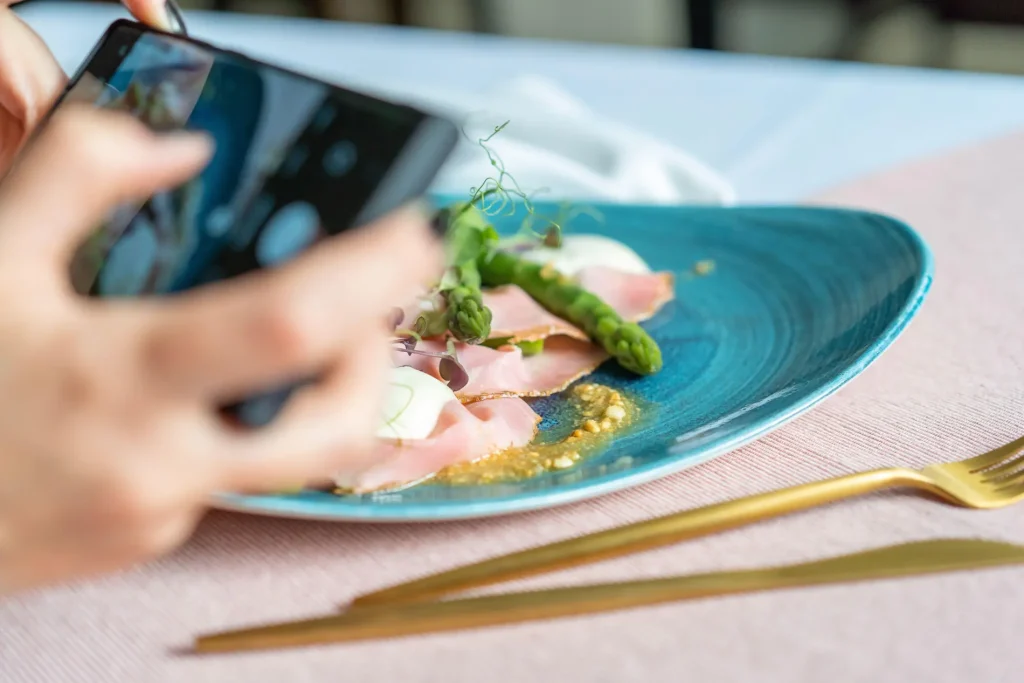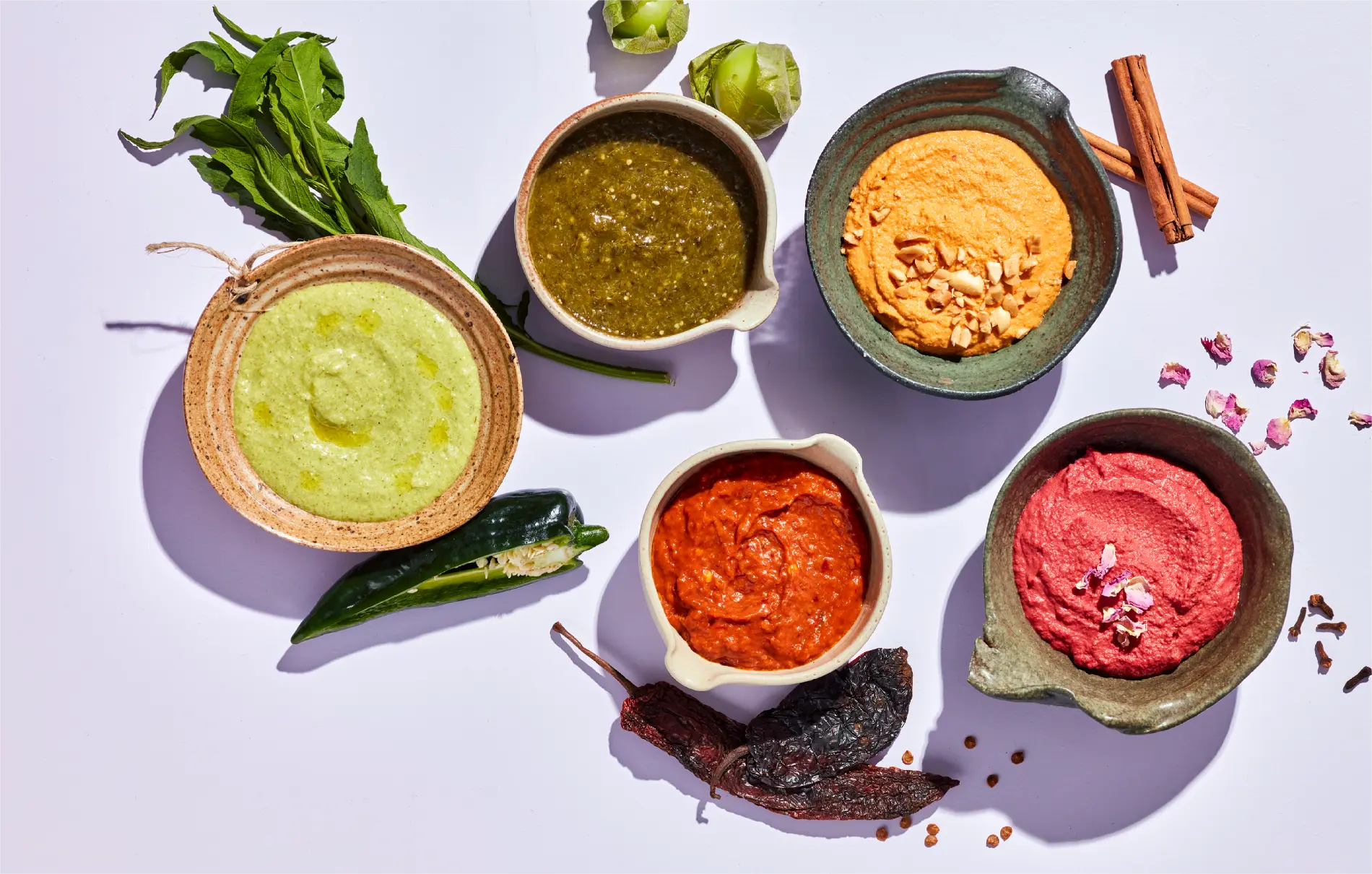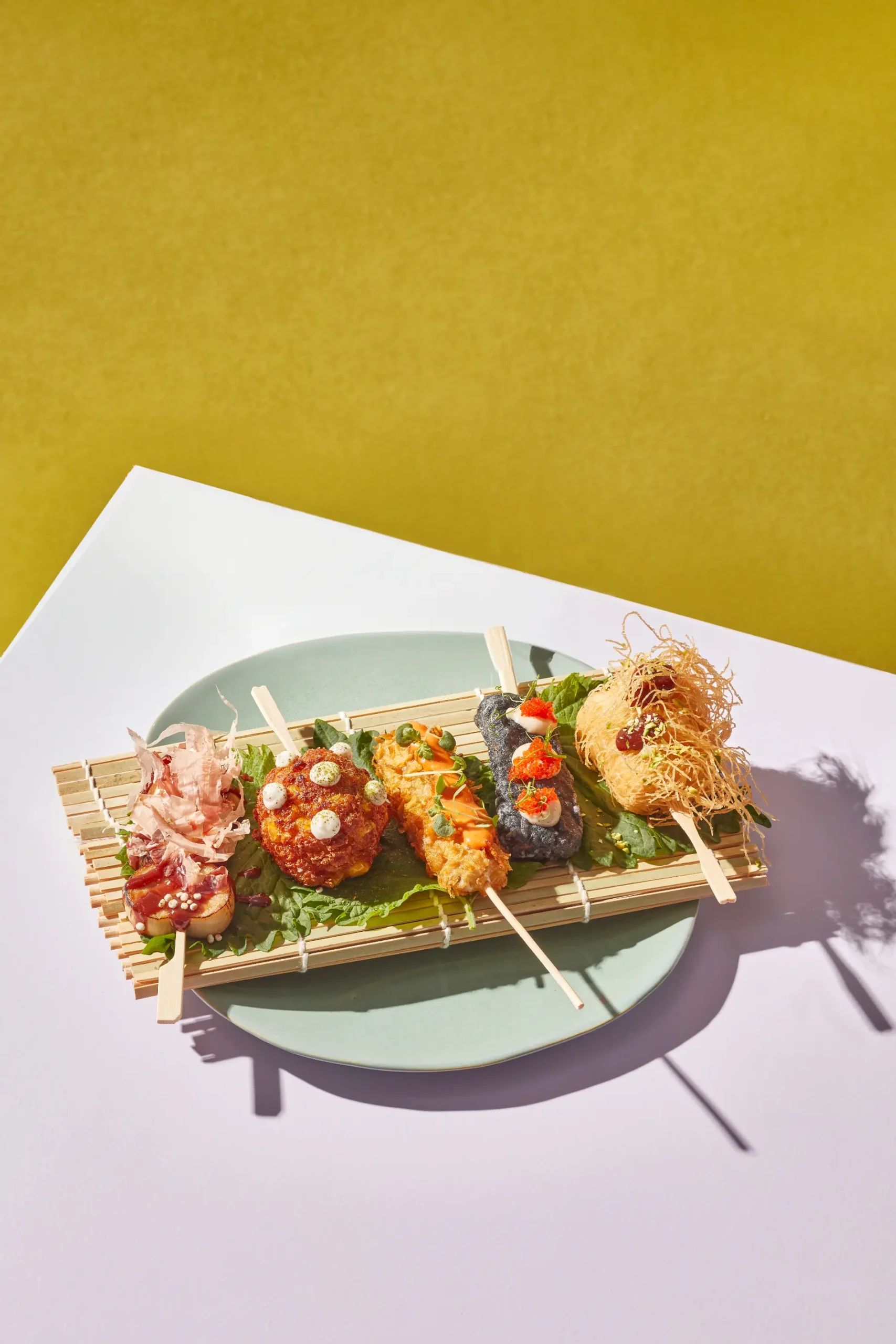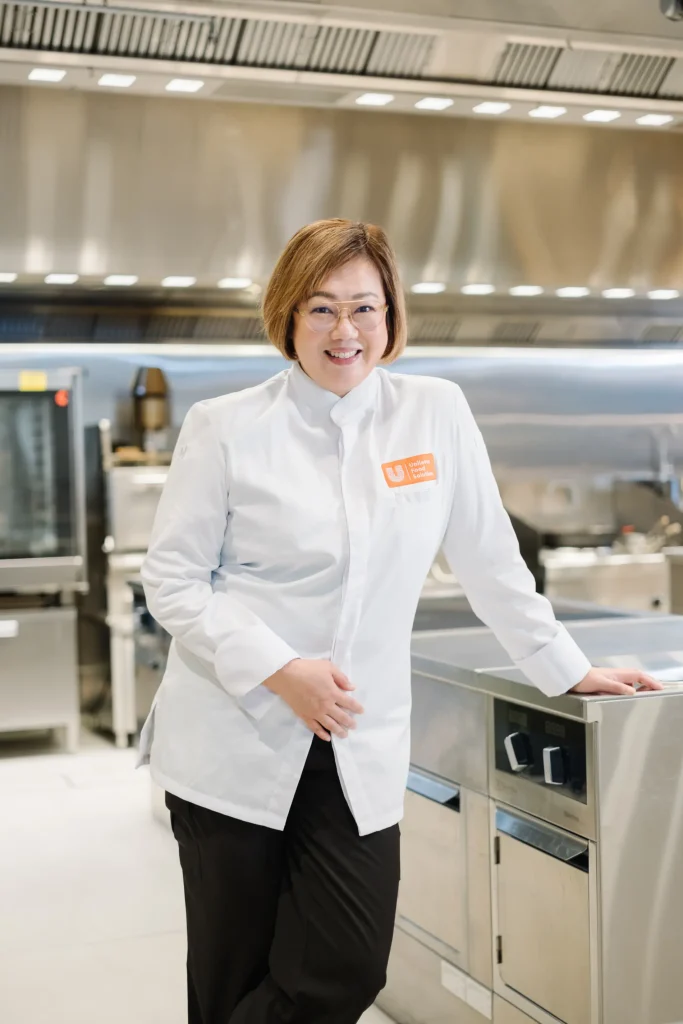FLAVOR SHOCK 
No Rules Experience
No Rules Experience
In all aspects of life, we’re demanding bigger, better, more vibrant experiences that we won’t forget – and why should the food we eat be any different?
We’re in an era of sensory overload, and it’s time to lean into that. Diners are keen to see chefs tear up the rulebook and experiment more, using authentic Mexican sauces like salsa poblana to create modern burgers, for example. They want wild fusion, chaos cooking and a no-holds-barred approach to the dishes they see on the menu.
The future of dining is about seeing food as a form of escapism, a vision that is achieved through the need to surprise and challenge diners with sensorial dishes that are designed to delight.


HOW Gen-Z DINERS ARE CREATING GREATER DEMAND FOR Unique CULINARY EXPERIENCES
With
Chef Joanne Limoanco-Gendrano
We find ourselves in an era that is starting to be shaped by Gen-Z diners. Their directness stems from their meticulous online research. Its members are swift in sizing up their experiences, making them quick to decide if something resonates with them, or otherwise pivot to the next enticing offer.

With their remarkable proficiency in tech, Gen-Z demands the same level of flexibility when it comes to their dining experiences. Convenience is paramount, which prompted the surge in restaurants’ expansion to provide takeout options. As a result, innovative food packaging strategies continue to emerge.
Food brands featured on delivery apps have also taken cues from their online behaviour, as they continuously expand their reach even to the point of making niche brands from abroad available locally through ghost kitchen operations or pop ups.
This generation seeks not only the restaurant’s brand name but also the individuals behind these unique food experiences. Similar to millennials, Gen-Z diners want to know the story behind the food, but with a twist: chefs now aren’t expected to reach celebrity status for guaranteed patronage but rather they must attain an influencer-level presence which allows them to be perceived as more approachable, adding more credibility to their affiliated restaurants.
Despite the wealth of available technology and services, the rising cost of goods and operations are challenging future investments. While adapting to this generation’s needs is crucial, maintaining a robust social media presence and upholding food quality still remain the most cost effective and compelling means to continuously attract and retain customers from any generation.

Salsa verde
The key ingredients of this green
sauce are garlic, onion, Serrano
peppers, and coriander.
Encacahuatado
Similar to a mole, the main ingredients
in this recipe are peanut and pumpkin
seeds, with some added spice from
Guajillo and Chipotle chillies.
Salsa poblana
Mild green poblano chillies, originally grown in the
Mexican state of Puebla, are roasted or fried to make
this sauce, which is delicious with chicken or pasta.
Salsa roja
This red sauce forms part of
Chilaquiles, a popular breakfast dish of
fried corn tortillas, but you can also use
it for tacos.
Mole rosa
Dried chipotle, rose petals and spices
including cloves, cumin and cinnamon
are used in this sauce, which
accompanies pork, chicken, fish, and
octopus.
MEXICAN SAUCE IDEAS FOR MODERN BURGERS, PASTA, CHICKEN AND MORE
With
Chef Carlos Venegas – Mexico
Written by
Ryan Cahill
For Mexican recipe ideas, visit unileverfoodsolutions.com.mx
Kushi Plate

Chef Joanne Limoanco-Gendrano, Arabia
For casual Independent Restaurants
Cost (€) per portion: 3-4
INGREDIENTS (SERVES 10)
Batter
- 2250ml water
- 18g xanthan gum
- 15g Knorr Aromat
- 450g rice flour
- 450g tapioca flour
Vegetables
- 1000g eggplant, peeled and sliced into 3” segments (1cm thick)
- 1000g king oyster mushrooms, sliced into 1” segments horizontally, scored
- 50g Knorr Aromat
- 30g coriander powder
Miso Date Glaze
- 100g white miso paste
- 200ml date syrup
- water, as needed
Chili Hollandaise
- 250g Knorr Hollandaise Sauce
- 90g Knorr Thai Sweet Chili Sauce
- 30g Gochujang water, as needed
Tahini Dressing
- 200g Hellmann’s Vegan Mayo
- 100g tahini
- 10g garlic cloves
- 2g ground pepper
- 1g salt
- 15g lemon juice
- 30ml cold water
For more information on these ingredients, click here.

Chef Joanne Limoanco-Gendrano
METHOD
Batter
- To make the batter, place the water in a deep bowl. Use a hand blender to blend the water and add the xanthan gum while the equipment is running.
- Whisk in the Knorr Aromat, rice, and tapioca flour. Batter can be stored in the chiller until ready to use.
King Mushroom “Scallops”
- Skewer the scored and marinated mushrooms using bamboo sticks.
- Grill over medium heat.
- Take off the fire and brush with the miso date glaze.
- To serve, sprinkle each mushroom skewer with fried quinoa and bonito flakes.
Chili Hollandaise
- Combine the ingredients together in a blender.
- Add a small amount of water if necessary.
- Place in a squeeze bottle or piping bag, chill until ready to use.
Black Eggplant Kushiage with Tahini
- Preheat the oil to 180°C. Whisk together the charcoal powder and the batter.
- Coat each eggplant with batter. Deep-fry for 3-4 mins until the eggplant is crispy.
- Place over a rack to drain off excess oil.
- Pipe the tahini dressing on the surface of the fried eggplant. Garnish with tobiko and chives.
Corn Bomb
- Preheat oil to 170°C.
- Combine the flour, cornstarch, and tapioca flour in a bowl. Dry whisk to combine.
- Combine the corn, Knorr Aromat, pepper, dried mango in a bowl. Start by adding half of the flour mix and 30ml of water. Mix with your hands to combine. If the mixture does not feel sticky enough, gradually add more water.
- Heat oil to 175°C. Form the corn mixture into balls and insert a cube of the cheese in the middle. You can set the corn bombs in the chiller before frying.
- Fry the corn bombs. Set them over a rack. Drizzle with Hellmann’s Vegan Mayo and dust with the kaffir spice dust before serving.
Kaffir Chili Dust
- Place all ingredients in a bowl. Dry whisk to evenly combine.
- Place in an airtight container.
Tahini Dressing
- Combine the ingredients together in a blender.
- Place in a squeeze bottle or piping bag, chill until ready to use.
Tofu kunafa
- Preheat the oil to 180°C. Season the diced tofu with Knorr Aromat, pepper, and coriander powder.
- Dip each seasoned, diced tofu with batter and coat with the kataifi strands.
- Deep-fry for 3-4 mins until golden brown and crispy.
- Place over a rack to drain off excess oil.
- Drizzle with miso date. Sprinkle with pistachio powder before serving.
Miso Date Glaze
- Combine all ingredients in a saucepan. Heat to dissolve the miso.
- Taste and adjust seasoning. Add water to thin out as needed.
Vegetables
- Place the eggplant and mushrooms on separate trays.
- Season with Knorr Aromat, coriander powder, and pepper. Set aside until ready to use.

